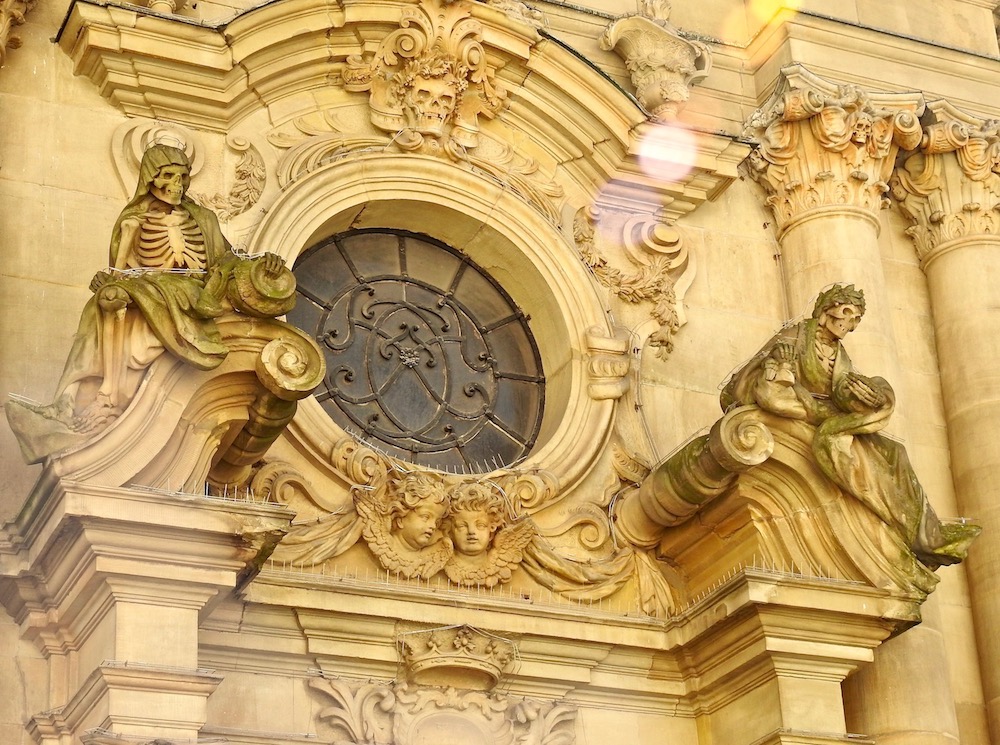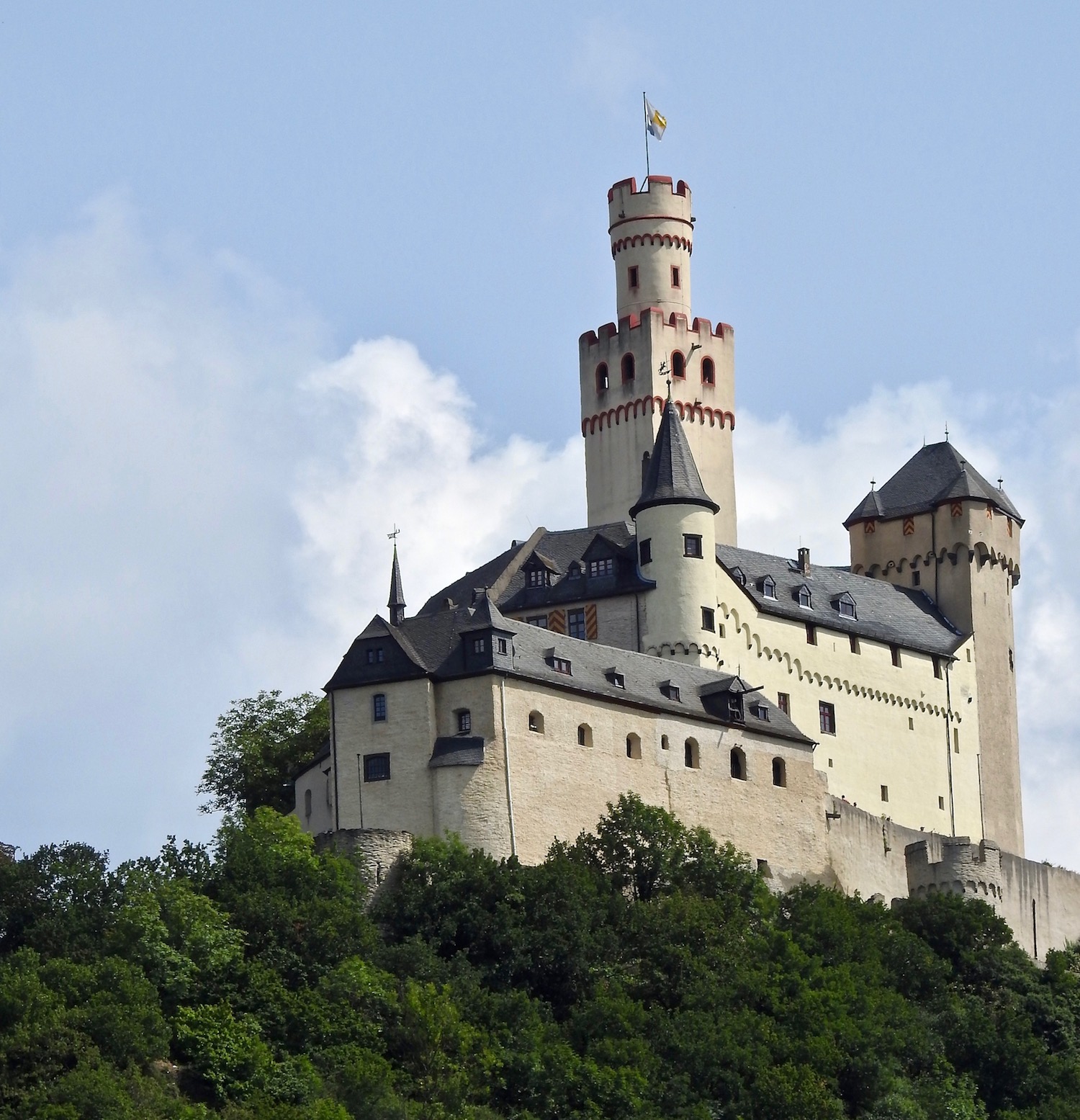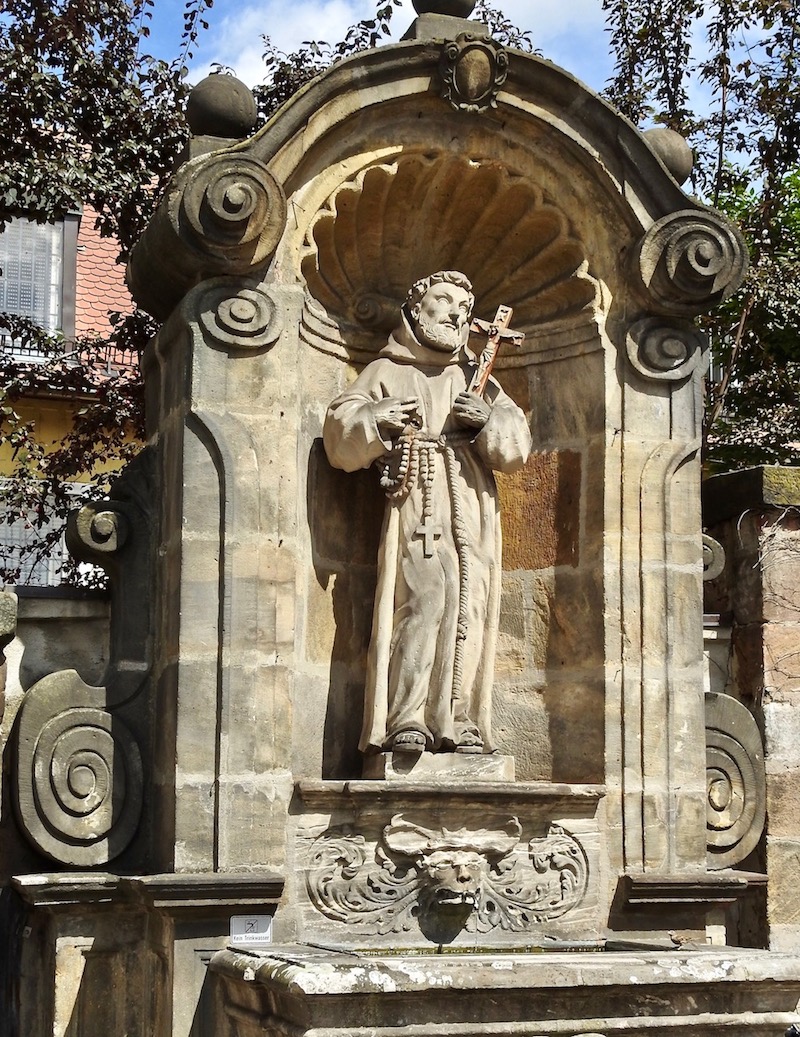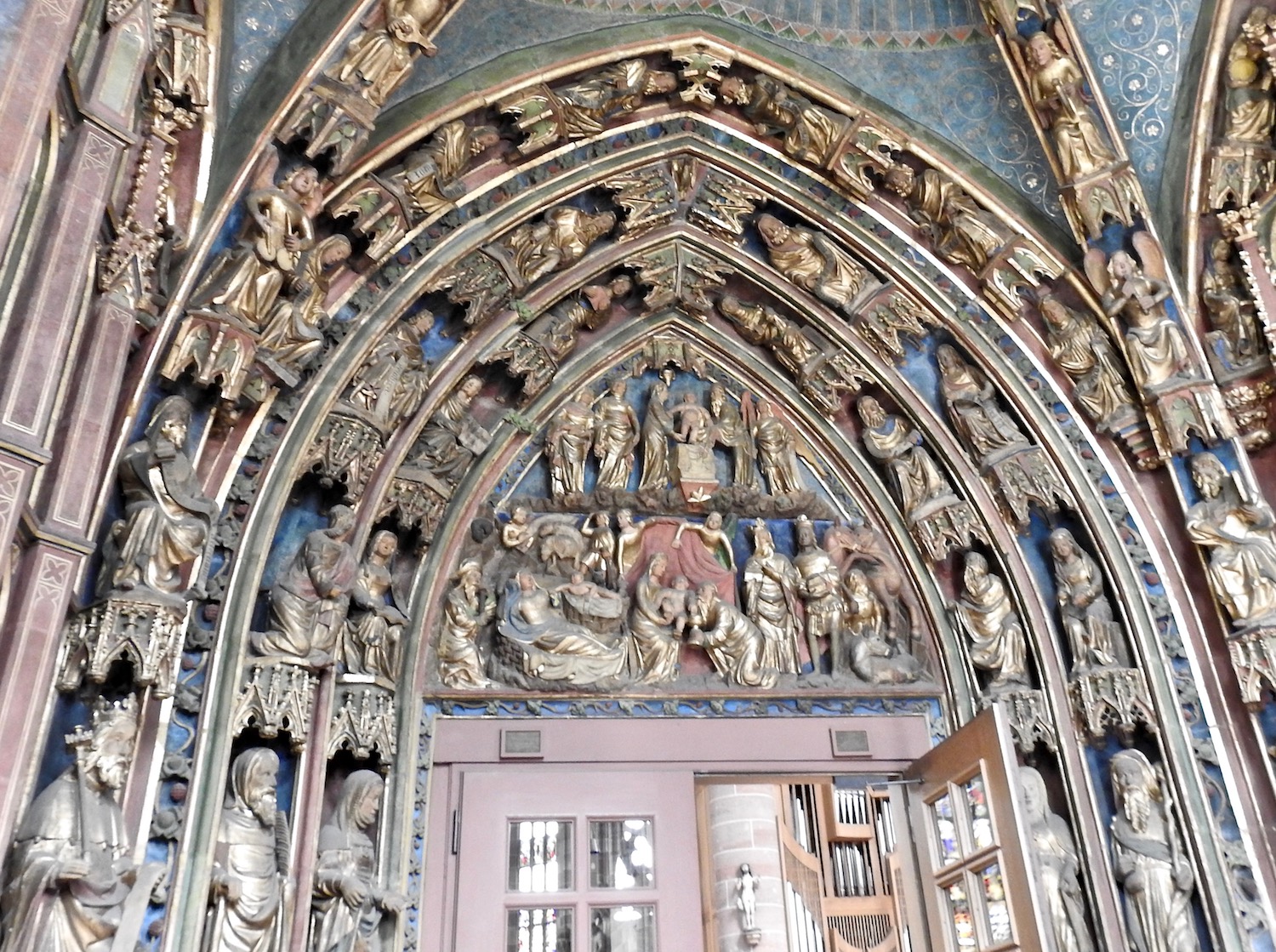
Wurzburg Residenz was the former residence of the Wurzburg prince-bishops. In the 18th century, the significance of the Holy Roman Empire of the German Nations was beginning to wain. Constructing an impressive residence was a powerful political tool. The idea behind such an immense project is “we’re big, beautiful and powerful…don’t mess with us.” The point of this opulent structure was to show-off.
Constuction of the Residenz began in 1719 and was completed in 1744. The final result is one of the most important palaces of the Baroque period. The interior is Rococo which was fashionable in the 1740’s. An example of this Rococo design is the Cabinet of Mirror. These are not the original mirrors because during WWII, allied boomers destroyed 87% of Wurzburg. The Residenz was reconstructed with the help of black and white photos. Furnishings and valuable items were stored in a basement until 1962 when the restoration began.

Rococo style design in the Cabinet of Mirrors.
Photo from official palace website. No photos are allowed to be taken inside the Residenz.
The Grand Staircase leads to Balthasar Neumann’s unsupported vaulted ceiling, which doubters said would cave in. The world’s largest fresco on the dome ceiling depicts the four known continents, Europe, Africa, America and Asia.

Neumann’s Grand Staircase leading to the world’s largest fresco.
Photo from official Residenz website.
Visitors are greeted by a fountain. At the top of the fountain stands Franconia, the symbol of the state.
Three figures surround her at the base: a sculptor, a painter, and a poet.
Wurzburg has other interesting things to offer visitors. Our Viking River Cruise guide, Christina, took us to the city center to experience more of Wurzburg.
The Cathedral and Neumunster Church are located in the heart of the Wurzburg. In 686, three Irish missionaries, Kilian, Kolonat, and Totnan, came to Wurzburg to convert Duke Gosbert to Christianity and leave his wife. He left town before making his decision. His wife took the opportunity to have all three murdered. The murders were discovered many years later and the three Irishmen became martyrs which made Wurzburg a pilgrimage city.
Between the Cathedral and Newmunster Church is an open area with four steps rising to the church. The city dictated that a handrail must be placed on the stairs. The people opposed the handrail…without success. In protest, they placed this “handrail” statue on the steps. It is bound in “red” tape.
A few Odds and Ends:
Wurzburg is famous for its Bocksbeutel, flattened bottles of wine. Be sure to pick one up at one of the many wine shops or the grocery store (good price at grocery).
The McDonald’s located in the main shopping area is called the American Embassy by the young people. I thought that was very clever!
Locals enjoy sitting along the Main River and enjoying the beautiful scenery. The Old Main Bridge with its line of saints along the bridge is spectacular.
I would like to spend more time exploring the city. Wurzburg is a complex religious center, shopping, wine and fine chocolates.
About the Author:
In 2010, Annie Coburn created Fab Placez. In 2014, she changed the name of her website to FAB Senior Travel to better define her target audience, mature travelers. In order to provide diversity of locations and topics for her subscribers, she publishes travel articles from other writers, as well as her own.
You are invited to subscribe:
Website: http:// www.fabseniortravel.com















